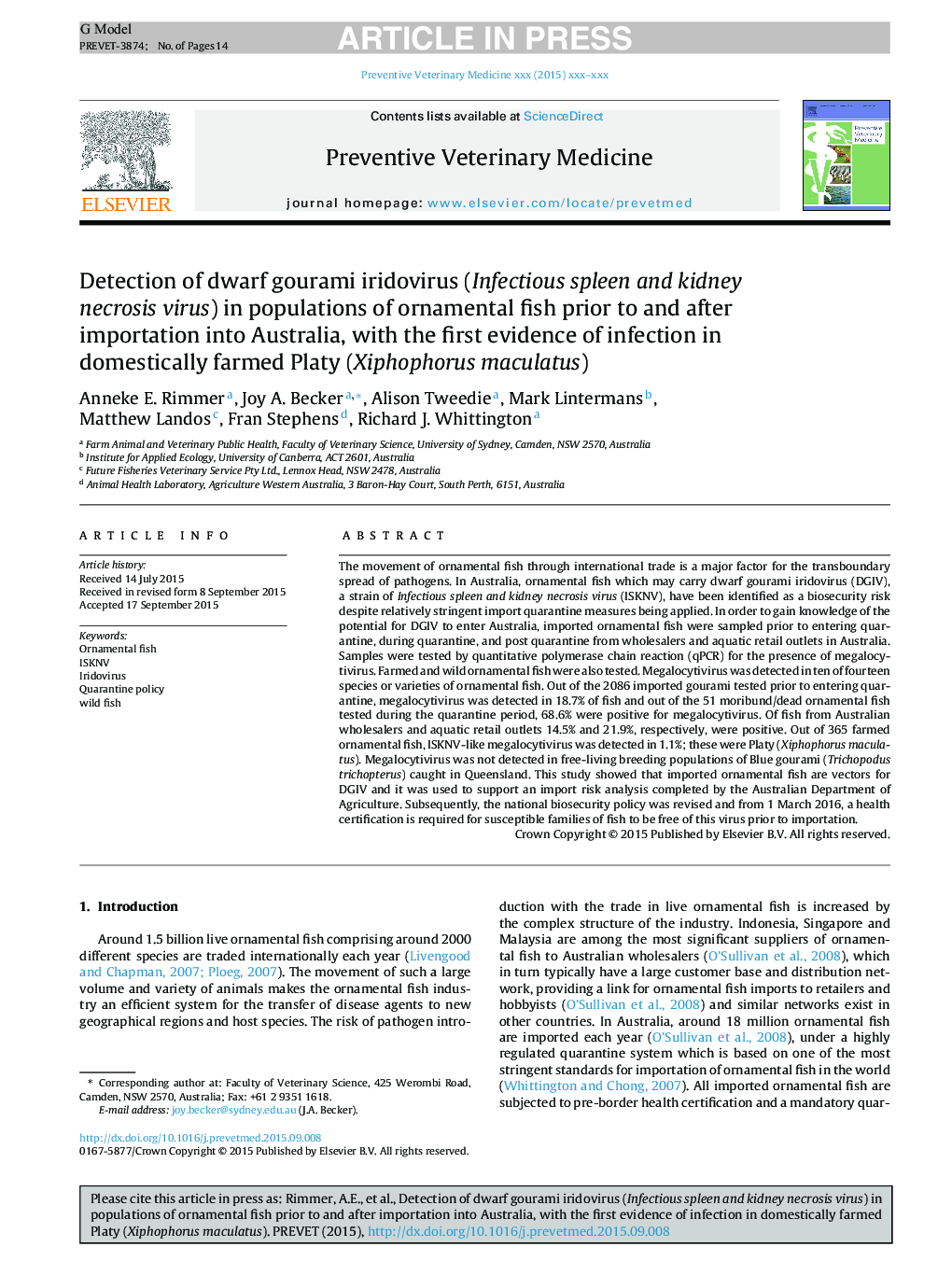| Article ID | Journal | Published Year | Pages | File Type |
|---|---|---|---|---|
| 5793087 | Preventive Veterinary Medicine | 2015 | 14 Pages |
Abstract
The movement of ornamental fish through international trade is a major factor for the transboundary spread of pathogens. In Australia, ornamental fish which may carry dwarf gourami iridovirus (DGIV), a strain of Infectious spleen and kidney necrosis virus (ISKNV), have been identified as a biosecurity risk despite relatively stringent import quarantine measures being applied. In order to gain knowledge of the potential for DGIV to enter Australia, imported ornamental fish were sampled prior to entering quarantine, during quarantine, and post quarantine from wholesalers and aquatic retail outlets in Australia. Samples were tested by quantitative polymerase chain reaction (qPCR) for the presence of megalocytivirus. Farmed and wild ornamental fish were also tested. Megalocytivirus was detected in ten of fourteen species or varieties of ornamental fish. Out of the 2086 imported gourami tested prior to entering quarantine, megalocytivirus was detected in 18.7% of fish and out of the 51 moribund/dead ornamental fish tested during the quarantine period, 68.6% were positive for megalocytivirus. Of fish from Australian wholesalers and aquatic retail outlets 14.5% and 21.9%, respectively, were positive. Out of 365 farmed ornamental fish, ISKNV-like megalocytivirus was detected in 1.1%; these were Platy (Xiphophorus maculatus). Megalocytivirus was not detected in free-living breeding populations of Blue gourami (Trichopodus trichopterus) caught in Queensland. This study showed that imported ornamental fish are vectors for DGIV and it was used to support an import risk analysis completed by the Australian Department of Agriculture. Subsequently, the national biosecurity policy was revised and from 1 March 2016, a health certification is required for susceptible families of fish to be free of this virus prior to importation.
Related Topics
Life Sciences
Agricultural and Biological Sciences
Animal Science and Zoology
Authors
Anneke E. Rimmer, Joy A. Becker, Alison Tweedie, Mark Lintermans, Matthew Landos, Fran Stephens, Richard J. Whittington,
